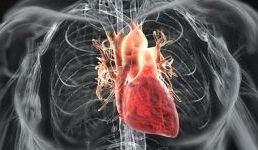Article
Generating New Heart Muscle with Endothelial Cells
Author(s):
Endothelial cells in the coronary arteries can function as cardiac stem cells to produce new heart muscle tissue, contradicting the belief that the heart has no regenerative potential.

Endothelial cells found in the coronary arteries can function as cardiac stem cells to produce new heart muscle tissue, according to a new study published in a recent issue of Cell Reports. Earlier research has suggested that new heart muscle cells are generated at a low rate, perhaps indicating the presence of cardiac stem cells, and contradicting the long-held belief that the heart is an organ without regenerative potential.
The new study by Bryan Fioret, PhD, now at Duke University, and colleagues at Vanderbilt University, postulates endothelial cells lining blood vessels might have the potential to generate new heart cells.
It was known that these cells give rise to other cell types, including blood cells, during development. Now, new technologies in a mouse model demonstrate that endothelial cells in the coronary arteries generate new cardiac muscle cells in healthy hearts. The investigators found 2 populations of cardiac stem cells in the coronary arteries, a quiescent population in the media layer and a proliferative population in the adventitia layer.
Antonis Hatzopoulos, PhD, associate professor of medicine and cell and developmental biology at Vanderbilt University, noted the finding of a cardiac stem cell “niche” has interesting implications with respect to coronary artery disease.
“Our study suggests that coronary artery disease could lead to heart failure not only by blocking the arteries and causing heart attacks, but also by affecting the way the heart is maintained and regenerated,” he said in a statement.
His previous research demonstrated that after a heart attack, endothelial cells give rise to the fibroblasts that generate scar tissue.
The new research suggests that the same endothelial system generates myocytes during homeostasis and then switches to generate scar tissue after a myocardial infarction; after injury, regeneration turns to fibrosis. Understanding this switch could lead to new strategies for restoring regeneration and producing new heart muscle after a heart attack, during aging, or in disease conditions such as diabetes and hypertension.





